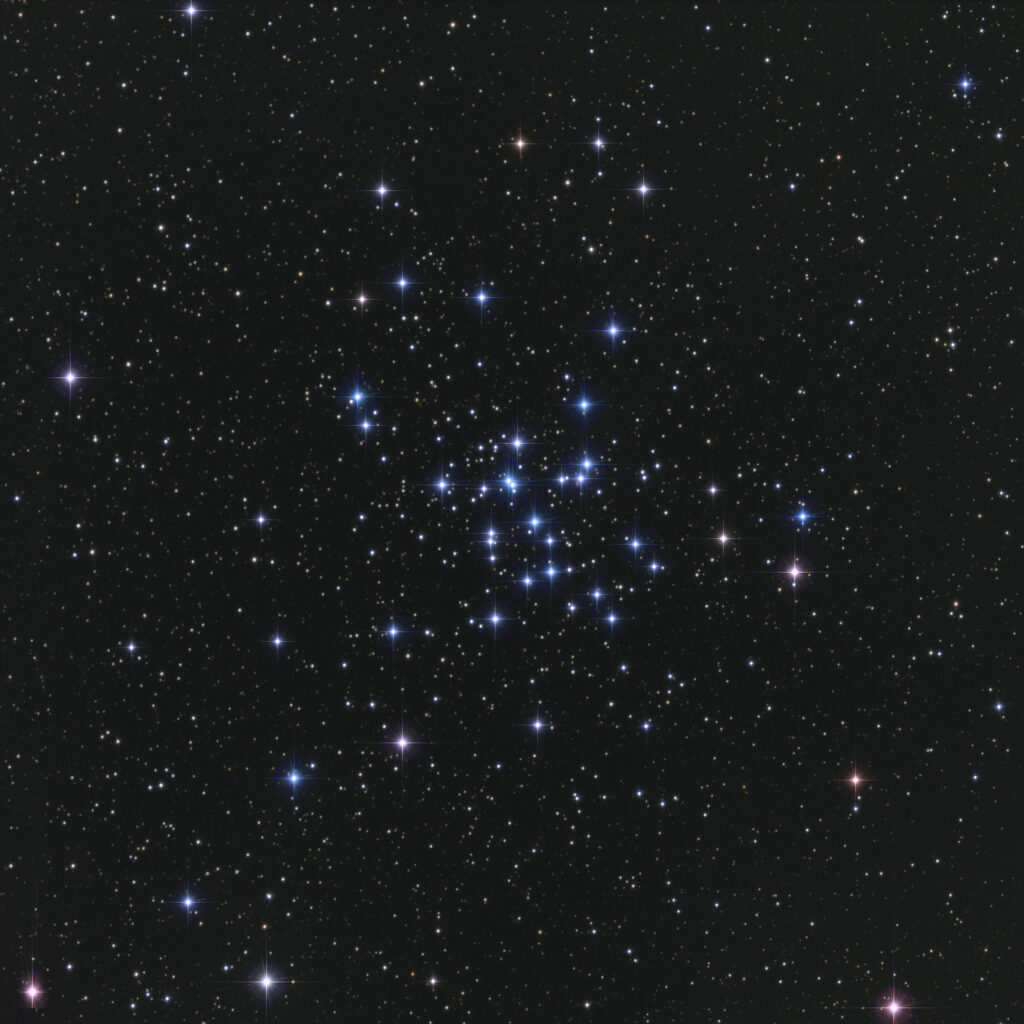This image of “open” star cluster M36 in the constellation Auriga (the “charioteer”) illustrates the common mistake that can be observed in any public kitchen or restroom of identifying cold water faucets with the color blue, and hot water faucets with the color red. According the Wien’s Law, color is associated with temperature. The reason is simple. Hotter temperatures cause atoms and molecules to become more energetic, and to emit photons of a higher energy (frequency) and shorter wavelength. These photons have a wavelength approaching 400 nanometers (a nanometer is a billionth of a meter), which is the shortest wavelength detectable by the human eye, and which the eye perceives as blue. But as temperature cools, the atoms and molecules become more sluggish, and emit less energetic photons having a lower frequency and longer wavelength. These photons have a wavelength approaching 700 nanometers—the longest wavelength detectable by the human eye, and which the eye perceives as red. So, to be scientifically accurate, cold water faucets should be identified with the color red, and hot water faucets with the color blue.
This same principle applies to stars. Hotter stars emit energetic photons having a higher frequency and shorter wavelength, which the human eye perceives as blue. Cooler stars emit less energetic photons having a lower frequency and longer wavelength, which the human eye perceives as red.
All stars are classified by the Morgan-Keenan (MKK) stellar classification system as O B A F G K M L or T, with O and B stars being the most massive and hottest, and T stars at the other end of the spectrum being small and cool. Since O and B class stars are the hottest stars, they emit energetic photons that the eye perceives as blue or bluish-white. Each stellar classification is itself subdivided into eight subclassifications (i.e., B0 through B9), with 0 being the hottest and most massive, and 9 being the coolest and least massive.
Many of the stars in M36 are B2 and B3 stars, meaning that they are massive, very hot, relatively young, and blue in color due to the shorter wavelength of their energetic photons. They are so massive that they burn out more quickly than the less massive and more stable stars like our Sun (a G2 class star).
M36 is an "open" star cluster in the constellation Auriga (the "charioteer"). There are some 90 member stars in the cluster, at a distance of 4,100 light years from Earth. M36 is the middle of three impressive open clusters that bisect Auriga.
Open Star Cluster M36 in Auriga (the "charioteer")
Date Taken:March 23, 2014
Location Taken:Sierra Remote Observatory, California
Conditions of Location: Equipment Used:Planewave 24" corrected Dall-Kirkham telescope, FLI PL09000 camera.
Processing Used:6 x 2 minutes LRGB for a total exposure of 48 minutes, processed in Maxim DL and Photoshop
Distance from Location:4,100 light years
Constellation:Auriga (the "charioteer")
Other Link:
